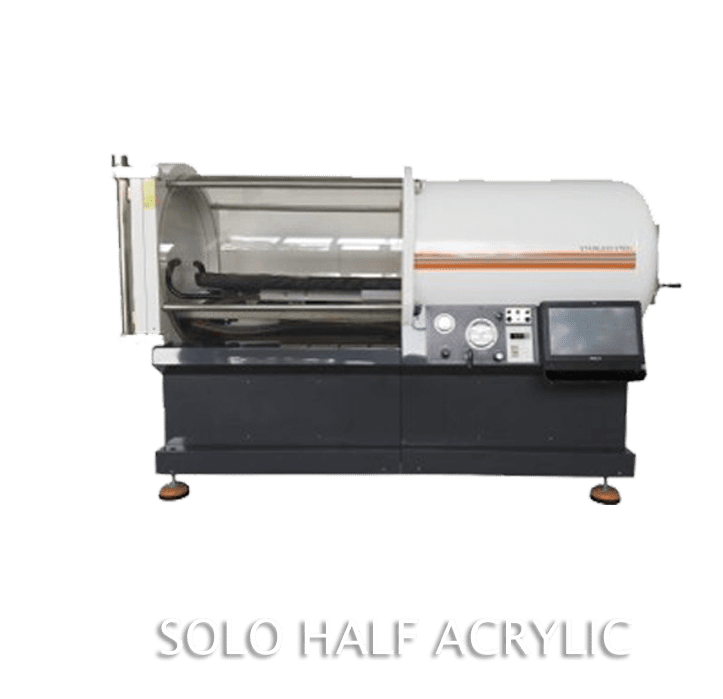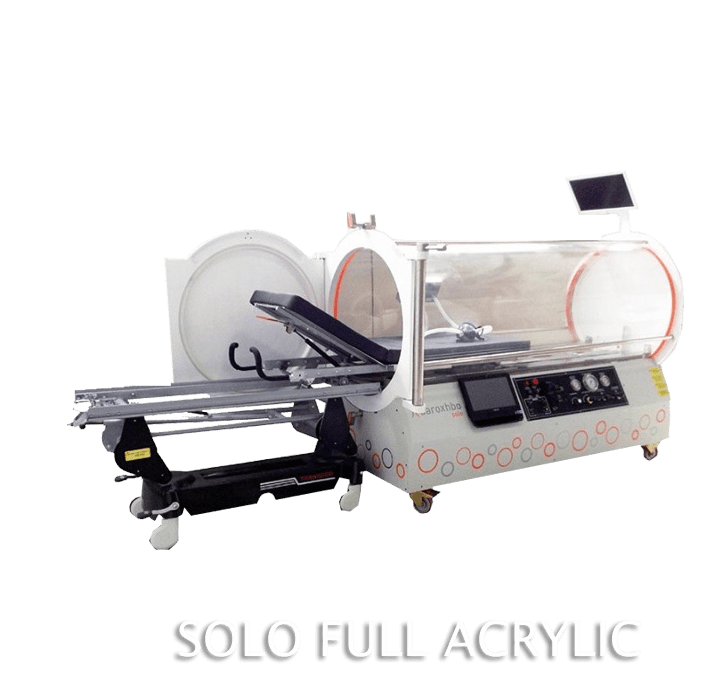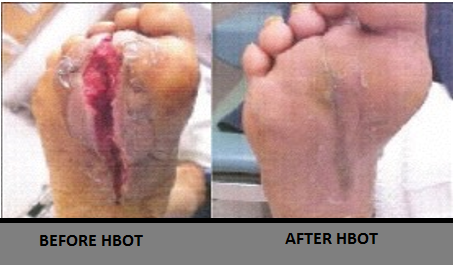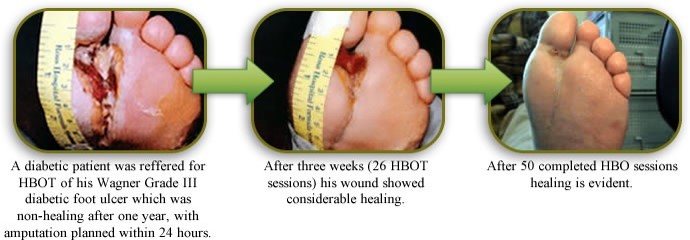Hyperbaric Chambers
“Hyper” means increased and “Baric” means pressure
- Hyperbaric Chamber is a medical device used to perform treatment with Oxygen at greater pressure than normal atmospheric pressure defined as 1ATM.
- The undersea and Hyperbaric medical Society (UHMS) defines Hyperbaric Oxygen treatment as treating 100% Oxygen delivered at pressure greater than 1.4 ATA.
- Hyperbaric Medicine is based on significantly increasing the level of Oxygen O2 in the blood generating the strong Hyperoxia adequate for medical therapies. Hyperoxia is created by dissolving the O2 in the blood plasma that is achieved by breathing it under a higher atmospheric pressure inside specially designed chambers. Hperoxia produces a wide chain of physiological process in the patient organism and is prescribed by the physicians for diverse treatment to deal with various diseases.

Bond Oxygen vs Dissolved Oxygen
There are two types of Oxygen in the body – Oxygen which is bound to hemoglobin and Oxygen which is dissolved freely in the blood. Normal respiration only involves transport of Oxygen which is bound to hemoglobin. However, because hemoglobin is larger than the size of most capillaries in such vital organs as the lungs, Kidneys, Liver and Skin hemoglobin – bound the Oxygen transport is not sufficient to attain full – body circulation

Bond Oxygen vs Dissolved Oxygen
If the atmospheric pressure of Oxygen is high, Oxygen will not readily bind with hemoglobin in red blood cells, the content of dissolved Oxygen will be increased, transport across capillary walls will efficient, free movement into the smallest areas of the circulatory system will become easier, and cellular activity will also be increased
Hyperbaric Oxygen Treatment (HBOT) involves breathing pure oxygen at higher than atmospheric pressures in an enclosed chamber. This process causes oxygen to be absorbed by all body fluids and by all body cells and tissues, even those with blocked or reduced blood flow. This increased flow of oxygen stimulates and restores function to damaged cells and organs, including those of the liver and brain.
The air we normally breathe contains 21% oxygen, 78% nitrogen, with the remaining 1% being contributed by the noble gases and carbon dioxide. The concentration of these gases is determined by the atmospheric pressure which is determined by the weather and is reduced at altitude. Unfortunately the variations in this pressure are ignored in general medical practice. Atmospheric pressure is accorded the unit 1 to represent atmospheric pressure absolute (1 ata) and this unit is divided according to the percentages of the gases in air to give their ‘partial pressures’ that is the part of the total pressure each gas is responsible for – oxygen therefore being 0.21 ata (21% of 1) and nitrogen 0.78 ata (78% of 1).
Hyperbaric Oxygen Chambers

BAROX SOLO - Half Acrylic
Specification
- Specifications: Design Pressure:- 3 ATA
- Main Chamber Patient Capacity:- 1 Person
- Inner Chamber Diameter- 840mm
- Inner length of chamber:- 2300mm
- Material:- 10028 Grade Pressure vessel steel
- W x H x L:- 970 x 1500 x 2570 mm
- Weight:- 1200 kg
- Volume:- 1M³
- Number of Doors:- 1 piece
- Door Opening:- 700mm
- Automation:- Optional
- Pressurizing:- Oxygen or Air (Via mask breathing)
- Acceptance Society Pressure Vessel:- Loyd or Tuv-sud
- Product Standards:- CE, med. Cert, EN14931,97/,23/EC, EN 13445
- Main Power:- 220 – 240 V (350W)
- Window Diameter :- 140mm

Barox SOLO - Full Acrylic
Specification
- Specifications: Design Pressure:- 3 ATA
- Main Chamber Patient Capacity:- 1 Person
- Inner Chamber Diameter- 840mm
- Inner length of chamber:- 2300mm
- Material:- 10028 Grade Pressure vessel steel
- W x H x L:- 970 x 1500 x 2570 mm
- Weight:- 1200 kg
- Volume:- 1M³
- Number of Doors:- 1 piece
- Door Opening:- 700mm
- Automation:- Optional
- Pressurizing:- Oxygen or Air (Via mask breathing)
- Acceptance Society Pressure Vessel:- Loyd or Tuv-sud
- Product Standards:- CE, med. Cert, EN14931,97/,23/EC, EN 13445
- Main Power:- 220 – 240 V (350W)
- Window Diameter :- 140mm

Barox Omega
Specification
- Design Pressure:- 2-16 Bar
- Main Chamber Patient Capacity:- 4-32 Person
- Antre Chamber Patient Capacity: 1-8 Person
- Inner Chamber Diameter: 800-3200 mm
- Inner Length of Main Chamber: 3000 - 20.000 mm
- Inner Length of Antre Chamber: 1000-8000 mm
- Material: 10028 Grade Pressure Vessel Steel
- Total Weight: 10000 - 32000 kg
- Number of Doors: 2-5 Pcs
- Rectangular Doors (HxL): 1700-2300 x 700-1200 mm
- Windows: 4-12 Pcs
- Windows Diameter: 200-300 mm
- Acceptance Society Pressure Vessel:- Loyd or Tuv-sud
- Acceptance Society Pressure Vessel: Loyd or Tuv-Sud
- Product Standards: CE, med. cert, EN14931, 97/23/EC, EN13445
FDA Approved and other Indications





.jpg)